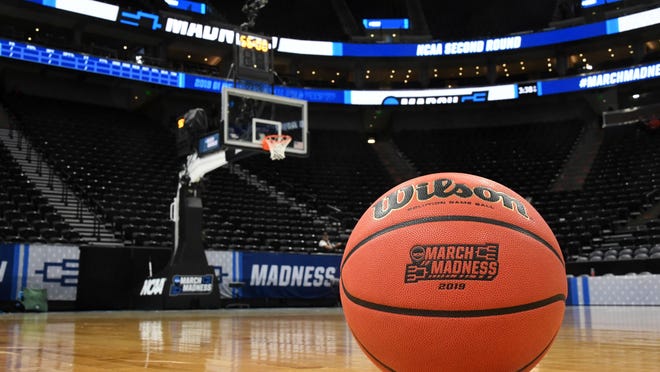March Madness: Bubbles, Busted Brackets, and Dropping the Ball for Women
Takeaways and standings as NCAA Men’s Tournament hits Sweet 16 and the Women’s Tournament finishes first round
After a day of spectacular upsets, the second day of first-round matchups in the men’s NCAA Tournament lived up to its name and delivered ‘madness’.
Bracket-busting and Cinderella runs were brewing, but were ultimately put to rest in the games earlier in the day. Kansas held off No. 14 Eastern Washington’s upset bid, and Florida State shook off a late rally by No. 13 seed UNC Greensboro to win as well. Later in the day, Creighton barely evaded an upset by sizing up UC Santa Barbara by one point.
Major upsets materialized in the later games, beginning with No. 13 seed Ohio sending reigning national champion Virginia Cavaliers home and No. 14 Abilene Christian cutting off No. 3 Texas.
The biggest news of the day was the first-round game between No. 7 seed Oregon and No. 10 seed Virginia Commonwealth, which was cancelled three hours before it was set to begin because of COVID-19 concerns. The game was ruled a no-contest and Oregon automatically advanced to the second round due to several of VCU’s players testing positive for the virus last-minute.
The field of 68 that entered the 2021 NCAA Men’s Tournament a week ago has been trimmed to only 16 teams left standing. After a historic opening weekend defined by a run of upsets by double-digit seeds, the tournament now gives way to the Sweet 16 starting March 27.
Oral Roberts, Oregon State, Syracuse, and UCLA have each advanced in the bracket after some unanticipated wins. Kicking off the tournament, the Pac-12 has been truly remarkable, going undefeated in the first round and sitting at 9-1 overall thus far. The Big Ten has not been nearly as momentous, with top seed Illinois, No. 2 seeds Iowa, and Ohio State all being eliminated in earlier rounds, leaving only Michigan left standing.
After the cancellation of last year’s March Madness, it was not only a question of if there would be a tournament, but also just what precautions and efforts will be taken to do so.
Due to the threat of COVID-19, the NCAA has established a bubble for all 34 members of each and every team’s traveling party to Indianapolis, where the tournament is being held. Team hotels are locked-down, and all players and coaches are prohibited from having any contact with the outside world. All transportation is conducted via charter bus or skyway, so coaches and players are not allowed to walk the streets.
Norfolk State head coach, Robert Jones, compares the NCAA Tournament bubble to a prison.
“I would probably equate it to the nicest jail you could be in right now,” said Jones, who pointed out he’s never been to prison. “[Monday] was my first time outside since Saturday.”
“We’re not able to leave the hotel and roam around the city like we want to,” said Norfolk State University guard Joe Bryant Jr. “We have to stay in the hotel and be as safe as possible.”
This ‘bubble’ that these athletes are forced to stay in is provided with accommodations and amenities granted under the auspices of the NCAA. However, these amenities and accommodations are painted to be quite different between male and female athletes. When the top women’s college basketball players from all around the nation came to the bubble in Indianapolis, they were greeted with accommodations that were immensely unequal when compared to those offered to their male counterparts.
The weight room for the female Division I athletes consisted of a negligible single stack of six pairs of weights and a stack of yoga mats piled on a folding table. The men’s side, by comparison, was filled with varying weights and appliances.
As images and videos of the weight facilities went viral on social media sites, other disturbing tidbits slowly but surely came to light. In contrast to the option-rich buffets served in the men’s bubble, the women were receiving small pre-packaged meals. The women’s teams were also receiving less reliable Covid-19 antigen tests, while the men’s teams were receiving the gold standard PCR tests. Even the women’s memorabilia was less impressive. Rather than facilitate full access to the media in a year when coverage has already been stymied by the pandemic, the NCAA further cut costs by opting not to staff the women’s tournament with any photographers for the first two rounds. Yet, they managed to round up enough photographers to publish thousands of photos of the opening games during the men’s tournament.
Unable to contradict nor refute the obvious discrepancy in amenities, the NCAA initially attempted to hide behind a statement blaming the “controlled environment” of the pandemic and claiming that the discrepancy in the weight facilities was due to a lack of space in the women’s bubble. That claim was quickly debunked by a video posted by Sedona Prince, a sophomore at the University of Oregon. Prince said, “If you aren’t upset about this problem, then you’re a part of it.”


